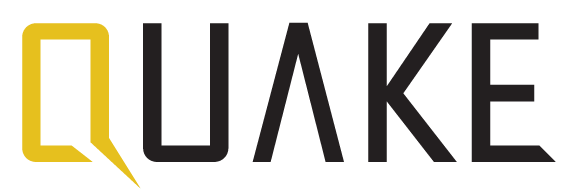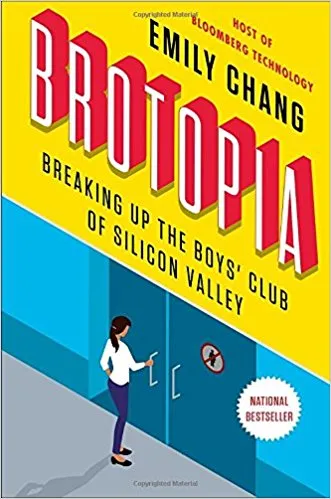Meet the company that is changing the way companies connect with their users.
It’s no surprise that Mason Levy, the founder and CEO of swivl, spends his days laser-focused on helping companies increase customer success and engagement. Finding a better way to create a deeper connection between customers and brands has always been the motivator for Mason. That key is personalization. swivl, at its core, is a conversation based platform that allows companies to provide deeply personalized experiences to their customers.
The swivl team is trying to solve a massive problem — $152B+ are lost each year due to churn. A huge number, right? Why? It’s simple. It’s because customers have a bad experience ☹️ and they look elsewhere.
Let’s face it, most companies are very focused on top-of-funnel marketing. Sales teams are driven to acquire customers and get them to make a purchase. swivl’s mantra is that a customer placing an order is only the “relationship starter.” The real magic comes in figuring out “how to truly build a long-term, meaningful relationship with the customer.”
Mason Levy, Founder and CEO
Mason Levy, now a startup veteran, made the leap into entrepreneurship as the first employee at a healthcare tech startup. During this time, he saw that cannabis used as an alternative medication by patients reduced their dependence on other drugs. This discovery peaked his curiosity to dig deeper just as the cannabis industry started booming in Colorado.
WeGrow
In July of 2015, Mason launched WeGrow, a conversational-based app that walks individuals through the step-by-step process of growing cannabis at home. In early 2016, Boulder-based accelerator CanopyBoulder invested in WeGrow. After completing the accelerator program, Mason was asked to run several cohorts for Canopy in Boulder, including helping to launch a program in Berkeley. In total, he helped to launch 9 companies in Berkeley and 19 in Colorado — mentoring and problem-solving key ingredients in his tool-kit. At the same time, he continued to build the WeGrow team. This is when it really started to get fun!
In early 2018, the team completed the sale of the assets of WeGrow and the core team pivoted or “swivl’d,” as Mason likes to joke, and launched swivl using the core technology and IP powering WeGrow.
The swivl
Mason has always asked himself one core question: “How does an end user, whether that’s a retail employee or a high at-risk patient, communicate and feel heard? How do you build a product people love? Furthermore, how can I use human and machine intelligence to scale these functions?” The answer, according to Mason, is improving the connection the customer has with the company and its brand, in essence, nailing customer success.
Most of his portfolio startup founders, and rapidly growing companies in general, may have core competencies in sales and technology, but can’t always put enough of their own resources towards customer success. This is where the relationship between the company and customers suffers.
Ultimately, these experiences led Mason to develop swivl, something he’s wanted to build “for the past eight and a half years,” ever since he was at Apple. swivl Studio is an engagement toolkit that helps personalize each customer interaction in context to what they are looking for and automates this process to ultimately improve each customer’s experience.
Here’s how swivl is changing customer engagement.
E-commerce Case Study:
Mary is an avid outdoor enthusiast living in Berkeley. Her favorite retailer to purchase equipment is Outdoor Life. OL is known for its hands-on customer service and educational forums, but have upped their game and taken customer success a step further with the recent addition of “Bernie”, their conversational agent. Mary pops on the OL website and is greeted by Bernie.
“Mary, great to see you — we hope your hike near Stinson Beach last weekend was awesome.” (Mary sees an image of outdoor hiking areas.)
“How did the new hiking socks hold up?” (the page depicts the hiking socks Mary had purchased).
Through this type of interaction, Bernie is able to proactively learn from and personalize every touchpoint of Mary’s experience on the website. Mary then asks about the best-reviewed tents on their site, which prompts Bernie to present the top 3 products in-chat based on price and past color preferences. She clicks on the first one, and Bernie automatically navigates her to that product page and highlights some of the top reviews to help with her buying decision. At this stage in OL’s customer journey, the swivl system identifies that Mary is at an 85% chance of buying a new item, so instead of pushing more controlled interactions, Bernie is replaced by Kyle, a customer success rep, in order to answer any last minute questions and help close the sale.
A week later, Mary receives a quick text from Bernie asking about the camping trip and noting that the weather forecast is predicting a rapid drop in temperature for the coming weekend. “Stay warm and bring a jacket!” ⛄️ This is a great example of a simple, yet delightful interaction that provides value to a customer — no strings attached.
Wow, when was the last time you had a company work with you to make your buying experience so personalized? And the next time you need something for your next excursion, wouldn’t you return to this company as a result of their hyper-focused customer engagement?
Ultimately, Mason and his team want companies to be able to EASILY go the extra mile to develop a deeper relationship with their customers and make all customers repeat customers .
Meet swivl
swivl differentiates itself in three key ways: human-in-the-loop AI, user-journey mapping, and the way dialogue pushes visual changes to the web experience to personalize the customer journey.
Specifically, they build human-in-the-loop AI, which means that when an automated system runs into any difficulties, an actual person is contacted to interact with the customer. These are called “edge cases”. These edge cases are then used to further train the system, making the platform smarter over time. swivl starts with automation, which is the “first line of defense,” but then makes sure to keep people “in the loop” to act as a check on the AI system. swivl takes a blended approach that creates an accurate and dependable system that combines the best of both human and machine intelligence.
Second, building user journeys in their system is intentionally very easy to do, “it’s digitizing post-it notes on a whiteboard” Mason says. BUT BETTER. 😀 Through this drag and drop platform, non-technical people such as marketers and product designers can focus on “doing what they do best.” (Hint: you don’t need to know how to code).
Believing it’s the future of tech and user experiences, swivl uses conversational interfaces; their differentiating factor, though, is that they believe “conversational interfaces should drive UI/UX changes.” What does this mean? If you’re interacting with a chatbot, the visual that you’re seeing should change based on the conversation.” In our use case, the page navigates automatically to images of outdoor hiking areas as Bernie and Mary discuss a recent trip and the product page for the top-reviewed tent, all in context to what the end-user is looking for.
swivl’s third differentiator is how they handle dialogue and content. Their approach follows Six Sigma’s Kaizen approach: “continuous improvement and no waste in the system,” Mason says. With swivl, there’s always the ability to replace, improve and experiment with parts of the system, unlike competitors, where one change in a system can cause everything upstream and downstream to essentially break.
The swivl team bought into swivl’s mission early on, and that’s part of what makes them click — they’re all willing to put in the late nights and long hours because they believe in the mission. “Startups are a team sport and we’ve got rockstars across the board,” Mason says.

Going Forward
As the swivl team continues to expand quickly and maintain the momentum, the next 18 months look exciting. Their product “will be category leading in many ways,” states Mason who expects his team to triple, if not quadruple, by the end of 2019.
Moving forward, swivl is focused on listening to its customers to make product enhancements and limit adoption challenges. Regardless of the growing pains that every startup, including swivl, experiences, Mason is confident in the “core team and their ability to put out fires.” Specifically, he’s confident in his team’s ability to prioritize — as Mason likes to say, “there are always going to be more fires to put out than you can handle. The best teams know how to let the small fires burn, and only focus on the fire you’re currently working on, before moving onto the next one.”
A deep fascination with Steve Jobs and his lifelong commitment to customer experiences influences Mason in every aspect of swivl. In turn, Mason’s own values are clearly woven into swivl’s overall mission: creating positive, more engaging experiences. Whether through leadership roles advising startups, or creating human-in-the-loop AI at swivl, Mason has always found himself in a position of improving people’s experiences. It’s clear to us at Quake that swivl is truly going to achieve this mission.
We invite you to meet Hoover to learn a bit more about how swivl is working to make customer success teams more successful!

Written by Anjali Agarwal, Junior Associate at Quake Capital.


